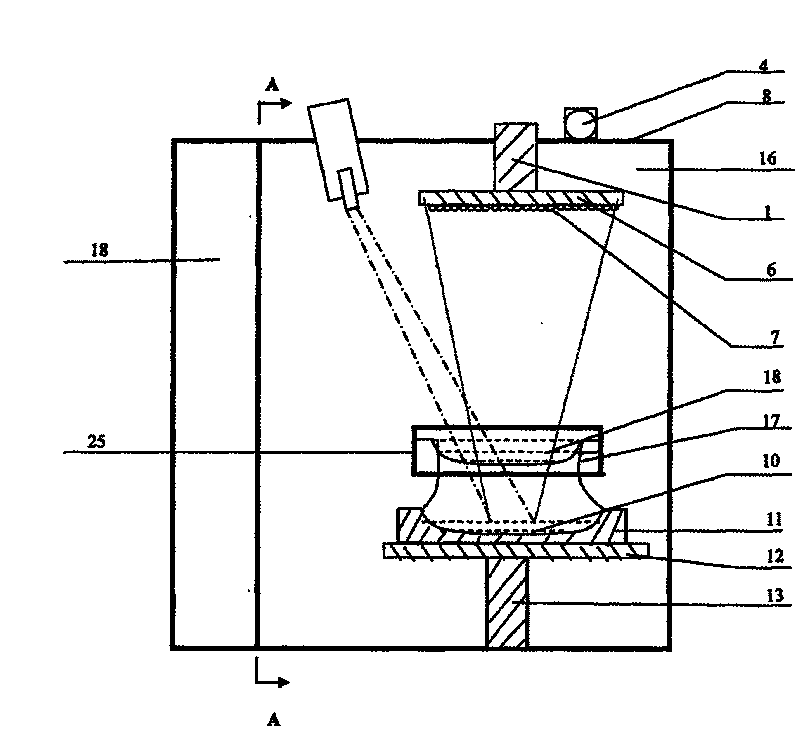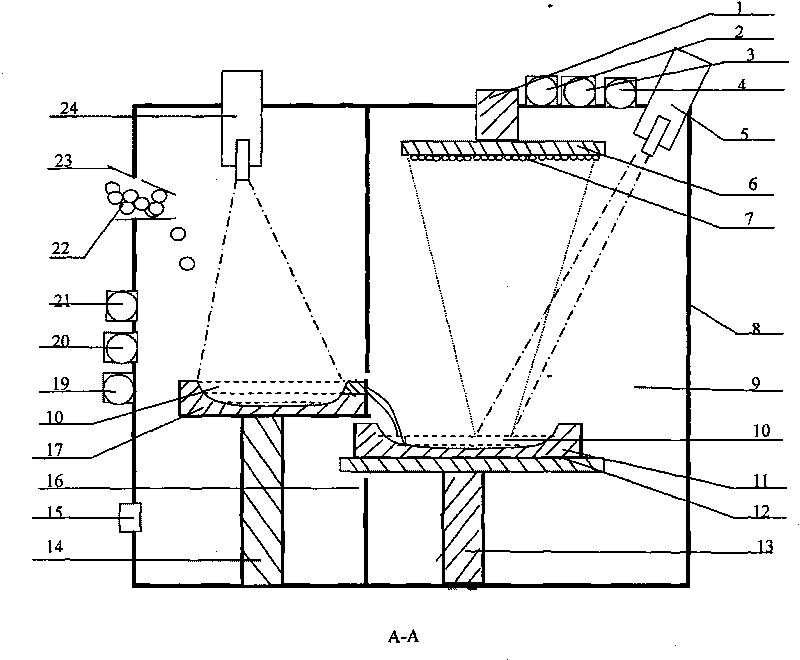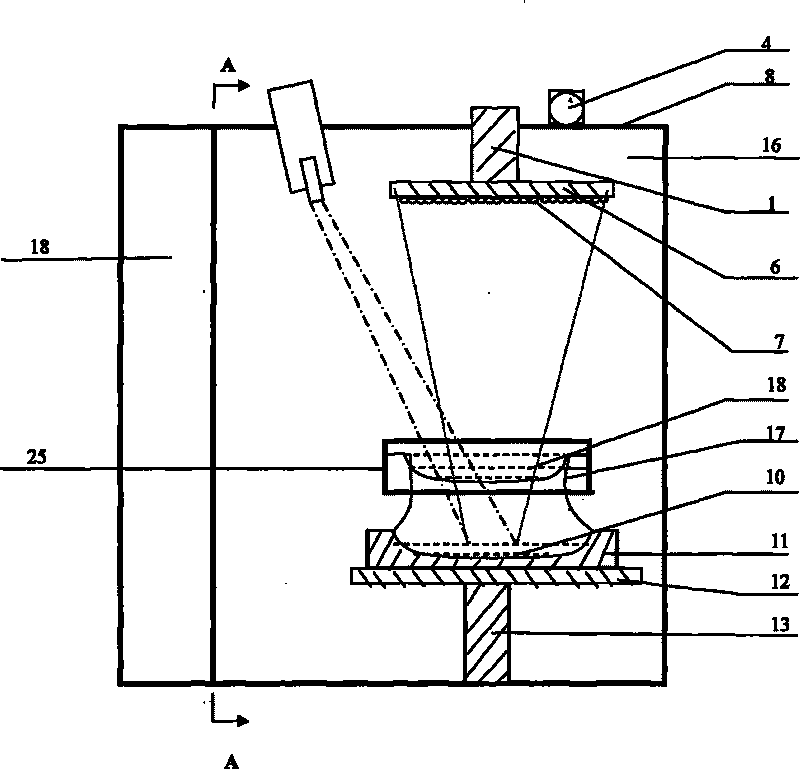Method and device for removing phosphorus and boron in polysilicon by continuous smelting
A polysilicon and electron gun technology, applied in chemical instruments and methods, self-area melting method, silicon and other directions, can solve the problems of low primary conversion rate, long process time, and many process links, and achieve good purification effect, stable technology, The effect of improving purity
- Summary
- Abstract
- Description
- Claims
- Application Information
AI Technical Summary
Problems solved by technology
Method used
Image
Examples
Embodiment Construction
[0021] The specific implementation of this solution will be described in detail below with reference to the technical solution and the accompanying drawings.
[0022] According to the Langmuir equation where ω B for evaporation γ B(l)inSi o rate, P B is the saturated vapor pressure of boron, M B is the atomic weight of boron atoms, T is the temperature of the molten pool, and is the activity coefficient of boron in silicon. Since the saturated vapor pressure of boron is very low, when silicon is smelted at high temperature, the boron contained in the silicon vapor is only less than 1% of the silicon matrix, and the evaporated silicon vapor is collected to achieve the purpose of removing boron.
[0023] Put the polysilicon material 22 containing 0.0005% boron and 0.0007% phosphorus into the water-cooled copper crucible 17, and the polysilicon material 22 is loaded with a third position of the water-cooled copper crucible 17, and the vacuum cover 25 is closed; the vacuumin...
PUM
 Login to View More
Login to View More Abstract
Description
Claims
Application Information
 Login to View More
Login to View More - R&D
- Intellectual Property
- Life Sciences
- Materials
- Tech Scout
- Unparalleled Data Quality
- Higher Quality Content
- 60% Fewer Hallucinations
Browse by: Latest US Patents, China's latest patents, Technical Efficacy Thesaurus, Application Domain, Technology Topic, Popular Technical Reports.
© 2025 PatSnap. All rights reserved.Legal|Privacy policy|Modern Slavery Act Transparency Statement|Sitemap|About US| Contact US: help@patsnap.com



